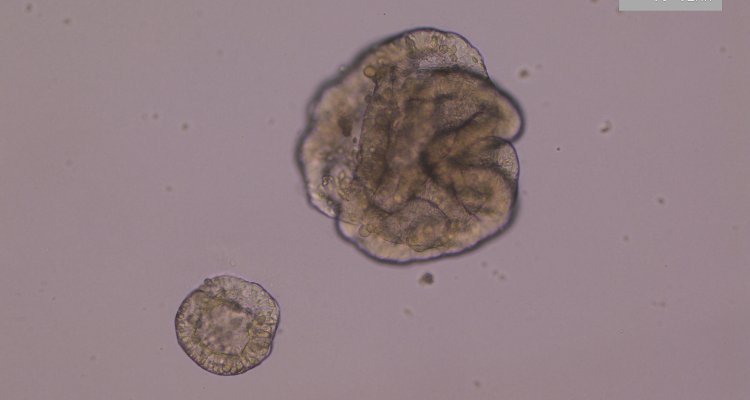
Project
Implementation of organoids in animal breeding and nutrition research
Organoids are a key innovative technology to replace animal testing and measure complex traits. The main goals of this public-private-partnership (PPP) project are to 1) validate the already developed organoid-based Transwell membrane system for nutritional research, particular used to study absorption and test different functional ingredients, 2) develop co-culturing of pig intestinal organoids and immune cells, and 3) develop gene editing in intestinal organoids from pigs.
Organoids
Organoids have proven to be a good in vitro research platform because they represent the organ from which they are derived. Organoids can be used to generate 3D and 2D structures that, in turn, can be used 1) to understand complex phenotypes i.e. gut health and feed efficiency, 2) to define new molecular phenotypes, and 3) as a screening tool of functional ingredients or pharmaceutical components. In addition, the use of organoids in animal research could reduce the number of animal experiments because functional ingredients and drugs could be tested in vitro where organoids could mimic the in vivo situation.
Immune-cell co-culture
The 2D in vitro organoid model could be used as a starting point to develop co-cultures. One of the main interests in this project is to develop an immune-cell co-culture, where we will combine intestinal organoids with immune cells. The development of such an in vitro model may help researchers to better understand the crosstalk between immune cells and intestinal cells, because under in vivo conditions such interactions will play a critical role in tissue homeostasis and inflammation.
Gene editing
Introducing genetic modification in specific genes became feasible with the development of genome editors, in particular with the discovery of the CRISPR/Cas9 system as genome editing tool. In current research, gene editing can facilitate fundamental research into gene functions. This knowledge can be used in breeding programs or to develop disease prevention controls such as vaccines. Furthermore, generated knowledge from gene editing could improve welfare, enhance production performance or improve nutritional value of livestock products. In combination with organoid technology, gene editing can facilitate the development of various disease models, identify genes responsible for specific geno-or phenotypes, or be used to investigate gene functions.